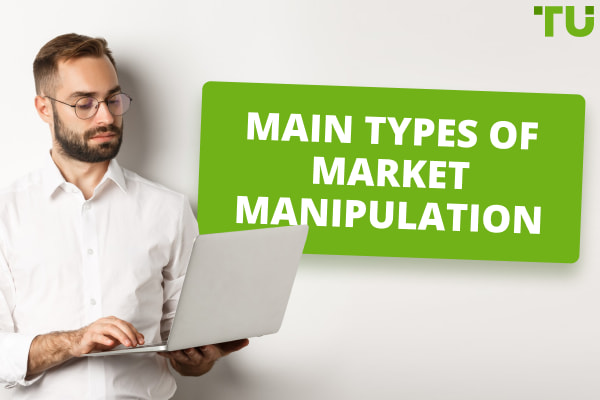Forex trading leverage cost explained
Most traders have heard of the word “leverage”, but less traders are familiar with what it actually means, how it works exactly, how much it costs, and how it can have a direct effect on their bottom line.
In simple terms, leverage is borrowed money used to increase the size of a position. Traders use borrowed capital, or “leverage” to control a larger position size than one's own funds. It amplifies both potential gains and losses.
Forex trading leverage cost refers to the expenses incurred when using borrowed money from a broker. Leverage can increase both your profits and losses beyond your own spending capabilities, so if you incur a loss using borrowed money, that is referred to as a Forex trading leverage cost.
How does leverage work in trading?
Leverage in trading allows traders to control a larger position size than they would be able to using only their own capital. It works by borrowing funds from a broker to increase the size of a position. Leverage is typically represented as a ratio, such as 50:1 or 100:1, which indicates how much market capital a trader can control in comparison to their own funds. For example, with a 50:1 leverage, a trader could control $50 in the market with just $1 of their own money.
Here's how leverage works:
Capital Amplification: Imagine having $1,000 in your account and opting for 100:1 leverage. This leverage enables you to manage a position worth $100,000, which is 100 times your initial capital. As a result, your potential gains and losses are magnified by this factor
Borrowed Funds: The broker lends you the additional funds needed to open the larger trade. This borrowed money, or ‘leverage’ is used to increase the size of your position. However, you are still responsible for any losses incurred so will still need to repay the borrowed amount
Margin Requirement: To use leverage, you need to maintain a certain amount of money in your trading account as collateral, known as ‘margin’. The margin requirement is a percentage of the total position size. If your losses amount to more than the margin, you may receive a margin call from your broker, requiring you to deposit more funds to cover the losses
Amplified Gains and Losses: Leverage amplifies both potential gains and losses. While it can lead to significant profits with a small capital investment, it also increases the risk of losing more than your initial deposit. It's essential to use leverage cautiously and implement risk management strategies like stop-loss orders to limit potential losses
Leverage Ratios Vary: Different brokers offer different leverage ratios, and regulations in different parts of the world may impose maximum leverage limits to protect traders. Higher leverage means an increased potential for substantial gains but also carries a higher risk in case of significant losses
In summary, leverage in trading works by magnifying your buying power, allowing you to control larger positions with a relatively small amount of capital. Due to the heightened risk involved when using leverage, it's crucial for traders to manage their risk effectively to avoid unmanageable losses.
Do traders pay for leverage?
Typically, traders don’t pay a direct fee for using leverage. There are however associated costs related to risks. When traders use leverage provided by brokers, they are essentially borrowing funds to enlarge their trading positions. There is no interest payment involved, but traders should be aware of potential costs such as spreads. Spreads are set by brokers and are the differences between buying and selling prices.
Although leverage can result in substantial gains, which could be described as ‘free money’, it can also lead to significant losses. If this occurs, traders must repay the borrowed money using their own capital. Think of it like borrowing money from a bank to start a business. If the business is a success, you can pay off the borrowed money and keep the profit, and it took very little of your own capital to start. However, if your business doesn’t succeed, you will still have to pay off your debt to the bank.
How much do traders pay for leveraged positions?
One of the main reasons that so many traders are drawn to Forex assets over other types of trading, is that Forex brokers offer a comparatively higher leverage than stocks or cryptocurrencies. Leverage is seen by many traders as a function of risk. As Forex trading has one of the lowest risk levels compared to other markets, brokers can offer higher leverage. Let’s look at some of the typical leverage ratios and costs associated with different markets.
Forex
Forex brokers often offer high leverage, such as 50:1, 100:1, or even 500:1, allowing traders to control larger positions with a relatively small amount of capital. Some brokers may require a margin deposit. For example, if a trader opts for a 100:1 leverage to open a position worth $100,000, they may have to put up a 1% margin deposit of $1000. Margin deposits depend on the broker used and the leverage ratio chosen by the investor.
Stocks
In stock trading, available leverage is considerably lower compared to Forex. It often ranges from 2:1 to 5:1 in the United States, due to regulatory restrictions. In the past, the over-extension of credit as leverage to invest in stocks contributed to the 1929 stock market crash. Now, financial regulatory bodies and governments heavily regulate leverage in stocks, which is why it’s much lower than in Forex.
Traders typically do not pay a direct fee for leveraged positions in the stock market. However, they may incur indirect extra costs. The primary cost is interest or financing charges if they hold leveraged positions overnight. Additionally, some brokers may charge borrowing fees for short-selling stocks.
Crypto
Cryptocurrency exchanges offer varying levels of leverage for trading digital assets, which can range from 2:1 to 100:1 or more. Most leverage trades in the crypto space use margin, but not all. To use leveraged trading, you’ll need a margin account in most cases. This means you will need enough capital to use as a margin deposit to cover any potential losses. Maybe, you also can be interested in information about how to trade cryptocurrency on margin.
Other costs incurred in crypto leverage trading are opening fees and rollover fees, both typically 0.02%, liquidation fees of 0.075% for liquidation sales, and maker fees and taker fees, which cost 0.025% and 0.075% respectively. All of these fees can vary depending on the asset in question.
Do I pay for a short position?
Yes, when you take a short position with leverage, you usually incur costs. These costs include interest or financing charges for borrowing the assets that you are short-selling. When you short-sell a position, you are basically borrowing it from someone else to sell it, and have to buy it back later. The interest you pay is a fee for borrowing these assets, and it's calculated based on the borrowed amount and the interest rate set by your broker.
Can leverage make you rich?
Leverage trading is a double-edged sword. As you are magnifying the position that you’re taking using borrowed money, you have the potential to make huge gains much faster relative to your actual capital. You can control 100 times or even 500 times more than what your actual capital Is worth. The downside of this is that if your position depreciates in value, you will have to cover much more substantial losses.
Let’s illustrate this point with an example scenario. Imagine we have two traders, Trader A and Trader B. Both Trader A and Trader B begin with a $100,000 trading capital and decide to short USD/GBP at 1.2000, anticipating a decline. Trader A uses 50:1 leverage, shorting $5,000,000, while Trader B opts for 5:1 leverage, shorting $500,000. If USD/GBP rises to 1.2100, Trader A incurs a 41.5% loss of $41,500, whereas Trader B's loss is 4.15% or $4,150. Trader B’s actual losses are much lower than Trader A’s, due to more careful leveraging. This highlights the substantial impact of leverage on potential losses and underscores the need for careful leverage management.
In short, yes, leverage can make you rich. However, it also has the capacity to decimate your actual capital a lot faster than if you engage in non-leveraged trading.
FAQs
Can you lose more money with leverage?
Yes. As you are increasing the value of your position by several orders of magnitude, you stand to gain and lose more, depending on which direction your trade goes.
Is leverage just debt?
If your leveraged position ends up incurring losses, then you are responsible for paying off that loss. In this sense, leverage is similar to debt.
How does leverage help make money?
Leverage allows investors to trade with more capital than they actually own. This can speed up the process of making real value gains.
How do rich people use debt to leverage?
Rich people often use debt to leverage in Forex by borrowing substantial capital from financial institutions or brokers. They can then control larger positions in the market, potentially amplifying their gains. However, this strategy carries significant risk, requiring careful risk management and expertise in Forex trading.
Glossary for novice traders
-
1
Cryptocurrency
Cryptocurrency is a type of digital or virtual currency that relies on cryptography for security. Unlike traditional currencies issued by governments (fiat currencies), cryptocurrencies operate on decentralized networks, typically based on blockchain technology.
-
2
Leverage
Forex leverage is a tool enabling traders to control larger positions with a relatively small amount of capital, amplifying potential profits and losses based on the chosen leverage ratio.
-
3
Margin Call
A margin call is a demand made by a broker or a financial institution to a trader or investor who is using margin (borrowed funds) to cover potential losses in a trading account. It occurs when the value of the securities or assets held in the account falls below a certain threshold, known as the maintenance margin or margin requirement, as specified by the broker.
-
4
Forex Trading
Forex trading, short for foreign exchange trading, is the practice of buying and selling currencies in the global foreign exchange market with the aim of profiting from fluctuations in exchange rates. Traders speculate on whether one currency will rise or fall in value relative to another currency and make trading decisions accordingly. However, beware that trading carries risks, and you can lose your whole capital.
-
5
Forex Risk Management
Risk management in Forex involves strategies and techniques used by traders to minimize potential losses while trading currencies, such as setting stop-loss orders and position sizing, to protect their capital from adverse market movements.
Team that worked on the article
Jason Law is a freelance writer and journalist and a Traders Union website contributor. While his main areas of expertise are currently finance and investing, he’s also a generalist writer covering news, current events, and travel.
Jason’s experience includes being an editor for South24 News and writing for the Vietnam Times newspaper. He is also an avid investor and an active stock and cryptocurrency trader with several years of experience.
Dr. BJ Johnson is a PhD in English Language and an editor with over 15 years of experience. He earned his degree in English Language in the U.S and the UK. In 2020, Dr. Johnson joined the Traders Union team. Since then, he has created over 100 exclusive articles and edited over 300 articles of other authors.
Mirjan Hipolito is a journalist and news editor at Traders Union. She is an expert crypto writer with five years of experience in the financial markets. Her specialties are daily market news, price predictions, and Initial Coin Offerings (ICO).











